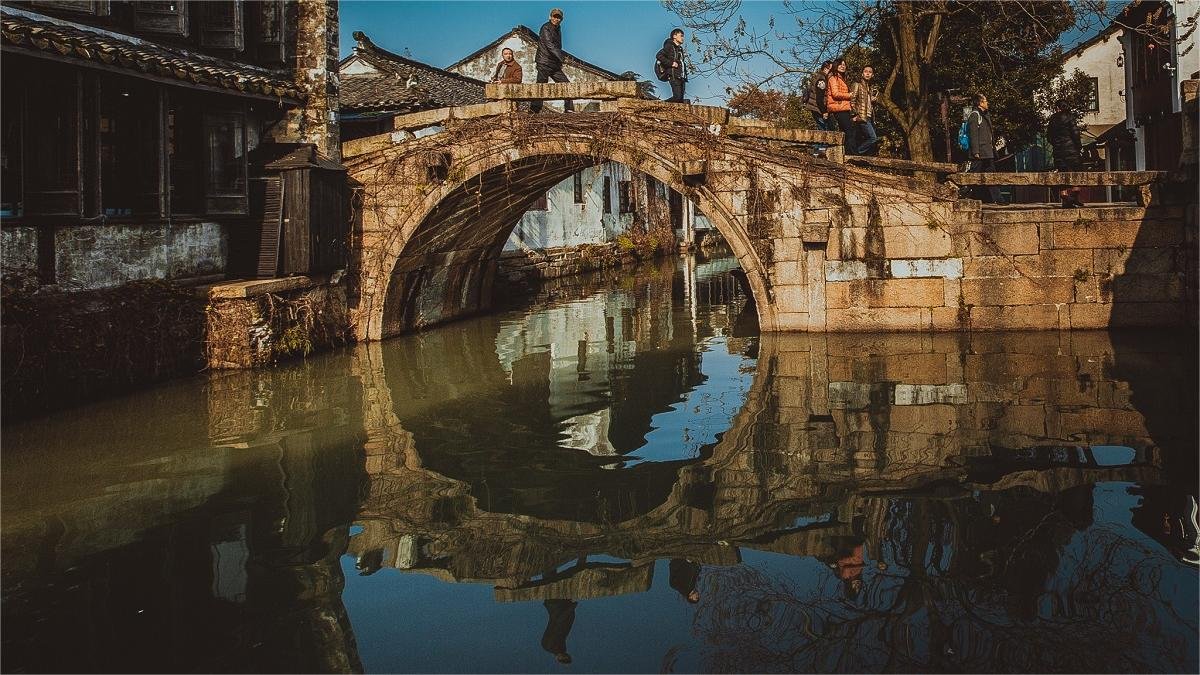Tongli and Zhouzhuang are two ancient water towns located in the Jiangsu province of China, known for their picturesque landscapes, well-preserved architecture, and rich cultural heritage. While both towns share similarities as traditional Chinese water towns, they also have unique characteristics that distinguish them from each other. In this comparison, we will explore the similarities and differences between Tongli and Zhouzhuang in various aspects such as history, architecture, culture, and tourism.
History:
Tongli and Zhouzhuang share a long history that dates back to over a thousand years, and both towns were established during the Song Dynasty (960-1279) in ancient China. They were initially built as agricultural settlements along the Grand Canal, a vital transportation route for rice and other goods. Due to their strategic locations, both towns flourished during the Ming (1368-1644) and Qing (1644-1912) dynasties, leading to the development of their distinctive water town cultures.
Architecture:
Similarities:
- Canal Networks: Both Tongli and Zhouzhuang are crisscrossed by a network of canals, earning them the nickname “Venices of the East.” These canals served as transportation routes in the past and remain central to the towns’ identities today.
- Ancient Bridges: Both towns feature ancient stone bridges that span the canals, adding to their charm. Notable bridges in Tongli include Taiping, Jili, and Siben, while in Zhouzhuang, you can find the famous Twin Bridges (Shide and Yong’an) and the Fu’an Bridge.
- Traditional Architecture: The architecture in both towns reflects traditional Chinese design, with whitewashed walls, black-tiled roofs, and intricate woodwork. Courtyards, archways, and water gates are common architectural elements in both towns.
Differences:
- Layout: Tongli has a more compact layout with narrower canals and smaller streets, giving it a cozy and intimate feel. Zhouzhuang, on the other hand, is larger and more spread out, with wider canals and more open spaces.
- Architectural Styles: While both towns showcase Ming and Qing Dynasty architectural styles, there are subtle differences. Tongli is known for its classical gardens, such as the Retreat & Reflection Garden, while Zhouzhuang boasts well-preserved ancient residences like the Shen House and Zhang House.
- Venice of the East: Zhouzhuang is often dubbed the “No. 1 Water Town in China” and is known for its association with the famous Chinese opera “The White-haired Girl.” This has contributed to Zhouzhuang’s popularity and recognition on a national scale.
Culture:
Similarities:
- Cultural Heritage: Both towns have a rich cultural heritage, with historical artifacts, folk customs, and traditional festivals celebrated throughout the year. Visitors can immerse themselves in the towns’ cultural traditions, such as local cuisine and craftwork.
- Water Town Lifestyle: In both Tongli and Zhouzhuang, you can witness the traditional water town lifestyle, with locals using boats to navigate the canals and conduct daily activities like shopping for groceries or visiting neighbors.
Differences:
- Festivals: While both towns celebrate traditional Chinese festivals like the Spring Festival (Chinese New Year), Tongli is known for its unique “Land and Water Temple Fair,” which is celebrated with colorful performances and activities. Zhouzhuang, on the other hand, is famous for its Mid-Autumn Festival celebrations, including boat parades and lantern displays.
- Local Cuisine: The local cuisine in Tongli and Zhouzhuang reflects the regional flavors of Jiangsu Province, but each town has its own specialties. Zhouzhuang is renowned for its “Wansan Pork Knuckle,” while Tongli is known for “Dezhuang Yuban” (fish cooked in soy sauce).
Tourism:
Similarities:
- Tourist Attractions: Both towns have become major tourist destinations, attracting visitors from around the world. Popular attractions in both include ancient residences, temples, gardens, and boat rides on the canals.
- Shopping: Tourists can find local crafts and souvenirs in both towns, including silk products, traditional Chinese paintings, and wooden carvings.
Differences:
- Crowds: Zhouzhuang tends to be more crowded due to its greater popularity and recognition, especially among Chinese tourists. Tongli, while still a popular destination, generally offers a quieter and more peaceful experience.
- Accessibility: Tongli is more easily accessible from nearby cities like Suzhou and Shanghai, making it a convenient day trip for tourists. Zhouzhuang is also accessible but may require a slightly longer journey from major cities.
In conclusion, Tongli and Zhouzhuang are both beautiful water towns with a shared history and many similarities, including their ancient roots, traditional architecture, and cultural heritage. However, they also have unique features and characteristics that set them apart and make each town worth visiting. Whether you prefer the cozy charm of Tongli or the bustling atmosphere of Zhouzhuang, both towns offer a glimpse into China’s rich cultural and historical past.


